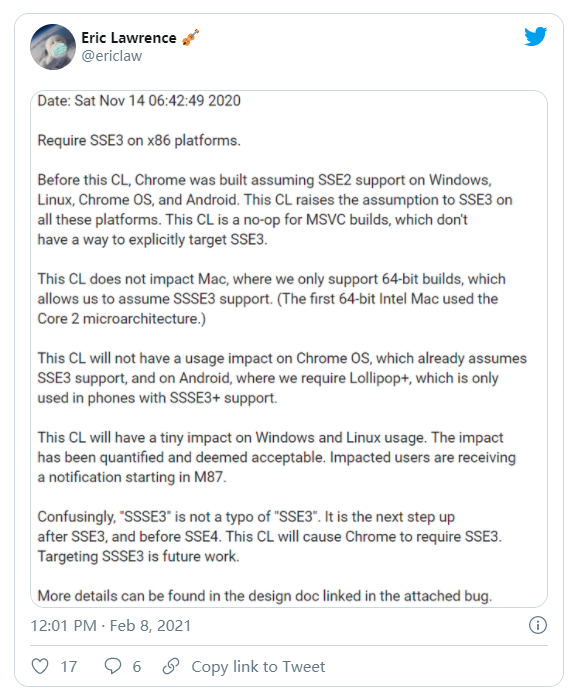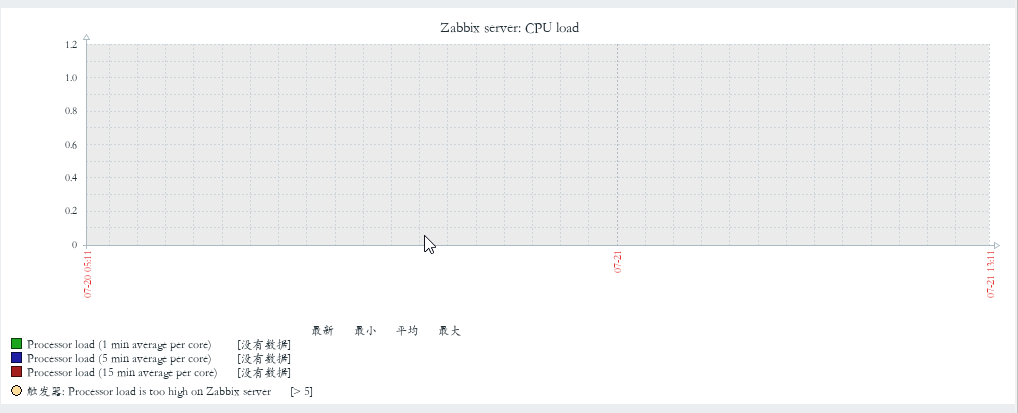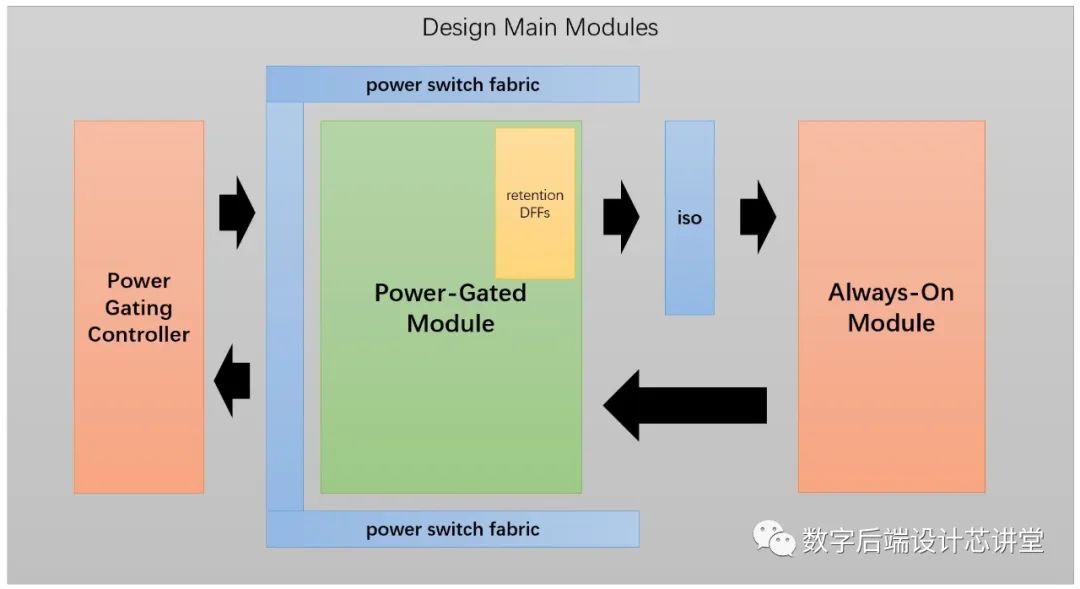可以将文章内容翻译成中文,广告屏蔽插件可能会导致该功能失效(如失效,请关闭广告屏蔽插件后再试):
问题:
I have UICollectionView with horizontal scrolling and there are always 2 cells side-by-side per the entire screen. I need the scrolling to stop at the begining of a cell. With paging enabled, the collection view scrolls the whole page, which is 2 cells at once, and then it stops.
I need to enable scrolling by a single cell, or scrolling by multiple cells with stopping at the edge of the cell.
I tried to subclass UICollectionViewFlowLayout and to implement the method targetContentOffsetForProposedContentOffset, but so far I was only able to break my collection view and it stopped scrolling. Is there any easier way to achieve this and how, or do I really need to implement all methods of UICollectionViewFlowLayout subclass? Thanks.
回答1:
OK, so I found the solution here: targetContentOffsetForProposedContentOffset:withScrollingVelocity without subclassing UICollectionViewFlowLayout
I should have searched for targetContentOffsetForProposedContentOffset in the begining.
回答2:
just override the method:
- (void)scrollViewWillEndDragging:(UIScrollView *)scrollView withVelocity:(CGPoint)velocity targetContentOffset:(inout CGPoint *)targetContentOffset {
*targetContentOffset = scrollView.contentOffset; // set acceleration to 0.0
float pageWidth = (float)self.articlesCollectionView.bounds.size.width;
int minSpace = 10;
int cellToSwipe = (scrollView.contentOffset.x)/(pageWidth + minSpace) + 0.5; // cell width + min spacing for lines
if (cellToSwipe < 0) {
cellToSwipe = 0;
} else if (cellToSwipe >= self.articles.count) {
cellToSwipe = self.articles.count - 1;
}
[self.articlesCollectionView scrollToItemAtIndexPath:[NSIndexPath indexPathForRow:cellToSwipe inSection:0] atScrollPosition:UICollectionViewScrollPositionLeft animated:YES];
}
回答3:
Swift 3 version of Evya's answer:
func scrollViewWillEndDragging(_ scrollView: UIScrollView, withVelocity velocity: CGPoint, targetContentOffset: UnsafeMutablePointer<CGPoint>) {
targetContentOffset.pointee = scrollView.contentOffset
let pageWidth:Float = Float(self.view.bounds.width)
let minSpace:Float = 10.0
var cellToSwipe:Double = Double(Float((scrollView.contentOffset.x))/Float((pageWidth+minSpace))) + Double(0.5)
if cellToSwipe < 0 {
cellToSwipe = 0
} else if cellToSwipe >= Double(self.articles.count) {
cellToSwipe = Double(self.articles.count) - Double(1)
}
let indexPath:IndexPath = IndexPath(row: Int(cellToSwipe), section:0)
self.collectionView.scrollToItem(at:indexPath, at: UICollectionViewScrollPosition.left, animated: true)
}
回答4:
Partly based on StevenOjo's answer.
I've tested this using a horizontal scrolling and no Bounce UICollectionView. cellSize is CollectionViewCell size. You can tweak factor to modify scrolling sensitivity.
override func scrollViewWillEndDragging(_ scrollView: UIScrollView, withVelocity velocity: CGPoint, targetContentOffset: UnsafeMutablePointer<CGPoint>) {
targetContentOffset.pointee = scrollView.contentOffset
var factor: CGFloat = 0.5
if velocity.x < 0 {
factor = -factor
}
let indexPath = IndexPath(row: (scrollView.contentOffset.x/cellSize.width + factor).int, section: 0)
collectionView?.scrollToItem(at: indexPath, at: .left, animated: true)
}
回答5:
Approach 1: Collection View
flowLayout is UICollectionViewFlowLayout property
override func scrollViewWillEndDragging(scrollView: UIScrollView, withVelocity velocity: CGPoint, targetContentOffset: UnsafeMutablePointer<CGPoint>) {
if let collectionView = collectionView {
targetContentOffset.memory = scrollView.contentOffset
let pageWidth = CGRectGetWidth(scrollView.frame) + flowLayout.minimumInteritemSpacing
var assistanceOffset : CGFloat = pageWidth / 3.0
if velocity.x < 0 {
assistanceOffset = -assistanceOffset
}
let assistedScrollPosition = (scrollView.contentOffset.x + assistanceOffset) / pageWidth
var targetIndex = Int(round(assistedScrollPosition))
if targetIndex < 0 {
targetIndex = 0
}
else if targetIndex >= collectionView.numberOfItemsInSection(0) {
targetIndex = collectionView.numberOfItemsInSection(0) - 1
}
print("targetIndex = \(targetIndex)")
let indexPath = NSIndexPath(forItem: targetIndex, inSection: 0)
collectionView.scrollToItemAtIndexPath(indexPath, atScrollPosition: .Left, animated: true)
}
}
Approach 2: Page View Controller
You could use UIPageViewController if it meets your requirements, each page would have a separate view controller.
回答6:
Horizontal Paging With Custom Page Width (Swift 4)
Many solutions presented here result in some weird behaviour that doesn't feel like properly implemented paging.
The solution presented in this tutorial, however, doesn't seem to have any issues. It just feels like a perfectly working paging algorithm. You can implement it in 5 simple steps:
- Add the following property to your type:
private var indexOfCellBeforeDragging = 0
- Set the
collectionView delegate like this: collectionView.delegate = self
- Add conformance to
UICollectionViewDelegate via an extension: extension YourType: UICollectionViewDelegate { }
Add the following method to the extension implementing the UICollectionViewDelegate conformance and set a value for pageWidth:
func scrollViewWillBeginDragging(_ scrollView: UIScrollView) {
let pageWidth = // The width your page should have (plus a possible margin)
let proportionalOffset = collectionView.contentOffset.x / pageWidth
indexOfCellBeforeDragging = Int(round(proportionalOffset))
}
Add the following method to the extension implementing the UICollectionViewDelegate conformance, set the same value for pageWidth (you may also store this value at a central place) and set a value for collectionViewItemCount:
func scrollViewWillEndDragging(_ scrollView: UIScrollView, withVelocity velocity: CGPoint, targetContentOffset: UnsafeMutablePointer<CGPoint>) {
// Stop scrolling
targetContentOffset.pointee = scrollView.contentOffset
// Calculate conditions
let pageWidth = // The width your page should have (plus a possible margin)
let collectionViewItemCount = // The number of items in this section
let proportionalOffset = collectionView.contentOffset.x / pageWidth
let indexOfMajorCell = Int(round(proportionalOffset))
let swipeVelocityThreshold: CGFloat = 0.5
let hasEnoughVelocityToSlideToTheNextCell = indexOfCellBeforeDragging + 1 < collectionViewItemCount && velocity.x > swipeVelocityThreshold
let hasEnoughVelocityToSlideToThePreviousCell = indexOfCellBeforeDragging - 1 >= 0 && velocity.x < -swipeVelocityThreshold
let majorCellIsTheCellBeforeDragging = indexOfMajorCell == indexOfCellBeforeDragging
let didUseSwipeToSkipCell = majorCellIsTheCellBeforeDragging && (hasEnoughVelocityToSlideToTheNextCell || hasEnoughVelocityToSlideToThePreviousCell)
if didUseSwipeToSkipCell {
// Animate so that swipe is just continued
let snapToIndex = indexOfCellBeforeDragging + (hasEnoughVelocityToSlideToTheNextCell ? 1 : -1)
let toValue = pageWidth * CGFloat(snapToIndex)
UIView.animate(
withDuration: 0.3,
delay: 0,
usingSpringWithDamping: 1,
initialSpringVelocity: velocity.x,
options: .allowUserInteraction,
animations: {
scrollView.contentOffset = CGPoint(x: toValue, y: 0)
scrollView.layoutIfNeeded()
},
completion: nil
)
} else {
// Pop back (against velocity)
let indexPath = IndexPath(row: indexOfMajorCell, section: 0)
collectionView.scrollToItem(at: indexPath, at: .left, animated: true)
}
}
回答7:
Kind of like evya's answer, but a little smoother because it doesn't set the targetContentOffset to zero.
- (void)scrollViewWillEndDragging:(UIScrollView *)scrollView withVelocity:(CGPoint)velocity targetContentOffset:(inout CGPoint *)targetContentOffset {
if ([scrollView isKindOfClass:[UICollectionView class]]) {
UICollectionView* collectionView = (UICollectionView*)scrollView;
if ([collectionView.collectionViewLayout isKindOfClass:[UICollectionViewFlowLayout class]]) {
UICollectionViewFlowLayout* layout = (UICollectionViewFlowLayout*)collectionView.collectionViewLayout;
CGFloat pageWidth = layout.itemSize.width + layout.minimumInteritemSpacing;
CGFloat usualSideOverhang = (scrollView.bounds.size.width - pageWidth)/2.0;
// k*pageWidth - usualSideOverhang = contentOffset for page at index k if k >= 1, 0 if k = 0
// -> (contentOffset + usualSideOverhang)/pageWidth = k at page stops
NSInteger targetPage = 0;
CGFloat currentOffsetInPages = (scrollView.contentOffset.x + usualSideOverhang)/pageWidth;
targetPage = velocity.x < 0 ? floor(currentOffsetInPages) : ceil(currentOffsetInPages);
targetPage = MAX(0,MIN(self.projects.count - 1,targetPage));
*targetContentOffset = CGPointMake(MAX(targetPage*pageWidth - usualSideOverhang,0), 0);
}
}
}
回答8:
This is a straight way to do this.
The case is simple, but finally quite common ( typical thumbnails scroller with fixed cell size and fixed gap between cells )
var itemCellSize: CGSize = <your cell size>
var itemCellsGap: CGFloat = <gap in between>
override func scrollViewWillEndDragging(_ scrollView: UIScrollView, withVelocity velocity: CGPoint, targetContentOffset: UnsafeMutablePointer<CGPoint>) {
let pageWidth = (itemCellSize.width + itemCellsGap)
let itemIndex = (targetContentOffset.pointee.x) / pageWidth
targetContentOffset.pointee.x = round(itemIndex) * pageWidth - (itemCellsGap / 2)
}
// CollectionViewFlowLayoutDelegate
func collectionView(_ collectionView: UICollectionView, layout collectionViewLayout: UICollectionViewLayout, sizeForItemAt indexPath: IndexPath) -> CGSize {
return itemCellSize
}
func collectionView(_ collectionView: UICollectionView, layout collectionViewLayout: UICollectionViewLayout, minimumLineSpacingForSectionAt section: Int) -> CGFloat {
return itemCellsGap
}
Note that there is no reason to call a scrollToOffset or dive into layouts.
The native scrolling behaviour already does everything.
Cheers All :)
回答9:
Here's the easiest way that i found to do that in Swift 4.2 for horinzontal scroll:
I'm using the first cell on visibleCells and scrolling to then, if the first visible cell are showing less of the half of it's width i'm scrolling to the next one.
If your collection scroll vertically, simply change x by y and width by height
func scrollViewWillEndDragging(_ scrollView: UIScrollView, withVelocity velocity: CGPoint, targetContentOffset: UnsafeMutablePointer<CGPoint>) {
targetContentOffset.pointee = scrollView.contentOffset
var indexes = self.collectionView.indexPathsForVisibleItems
indexes.sort()
var index = indexes.first!
let cell = self.collectionView.cellForItem(at: index)!
let position = self.collectionView.contentOffset.x - cell.frame.origin.x
if position > cell.frame.size.width/2{
index.row = index.row+1
}
self.collectionView.scrollToItem(at: index, at: .left, animated: true )
}
回答10:
Also you can create fake scroll view to handle scrolling.
Horizontal or Vertical
// === Defaults ===
let bannerSize = CGSize(width: 280, height: 170)
let pageWidth: CGFloat = 290 // ^ + paging
let insetLeft: CGFloat = 20
let insetRight: CGFloat = 20
// ================
var pageScrollView: UIScrollView!
override func viewDidLoad() {
super.viewDidLoad()
// Create fake scrollview to properly handle paging
pageScrollView = UIScrollView(frame: CGRect(origin: .zero, size: CGSize(width: pageWidth, height: 100)))
pageScrollView.isPagingEnabled = true
pageScrollView.alwaysBounceHorizontal = true
pageScrollView.showsVerticalScrollIndicator = false
pageScrollView.showsHorizontalScrollIndicator = false
pageScrollView.delegate = self
pageScrollView.isHidden = true
view.insertSubview(pageScrollView, belowSubview: collectionView)
// Set desired gesture recognizers to the collection view
for gr in pageScrollView.gestureRecognizers! {
collectionView.addGestureRecognizer(gr)
}
}
func scrollViewDidScroll(_ scrollView: UIScrollView) {
if scrollView == pageScrollView {
// Return scrolling back to the collection view
collectionView.contentOffset.x = pageScrollView.contentOffset.x
}
}
func refreshData() {
...
refreshScroll()
}
override func viewDidLayoutSubviews() {
super.viewDidLayoutSubviews()
refreshScroll()
}
/// Refresh fake scrolling view content size if content changes
func refreshScroll() {
let w = collectionView.width - bannerSize.width - insetLeft - insetRight
pageScrollView.contentSize = CGSize(width: pageWidth * CGFloat(banners.count) - w, height: 100)
}
回答11:
Here is my version of it in Swift 3. Calculate the offset after scrolling ended and adjust the offset with animation.
collectionLayout is a UICollectionViewFlowLayout()
func scrollViewDidEndDecelerating(_ scrollView: UIScrollView) {
let index = scrollView.contentOffset.x / collectionLayout.itemSize.width
let fracPart = index.truncatingRemainder(dividingBy: 1)
let item= Int(fracPart >= 0.5 ? ceil(index) : floor(index))
let indexPath = IndexPath(item: item, section: 0)
collectionView.scrollToItem(at: indexPath, at: .left, animated: true)
}
回答12:
Yes, here's my implementation in Swift 4.1 for vertical cell-based paging:
override func targetContentOffset(forProposedContentOffset proposedContentOffset: CGPoint, withScrollingVelocity velocity: CGPoint) -> CGPoint {
// Page height used for estimating and calculating paging.
let pageHeight = self.itemSize.height + self.minimumLineSpacing
// Make an estimation of the current page position.
let approximatePage = self.collectionView!.contentOffset.y/pageHeight
// Determine the current page based on velocity.
let currentPage = (velocity.y < 0.0) ? floor(approximatePage) : ceil(approximatePage)
// Create custom flickVelocity.
let flickVelocity = velocity.y * 0.3
// Check how many pages the user flicked, if <= 1 then flickedPages should return 0.
let flickedPages = (abs(round(flickVelocity)) <= 1) ? 0 : round(flickVelocity)
let newVerticalOffset = ((currentPage + flickedPages) * pageHeight) - self.collectionView!.contentInset.top
return CGPoint(x: proposedContentOffset.x, y: newVerticalOffset)
}
This shouldn't glitch and allows you to set your own flickvelocity easily.
edit:
Here's a horizontal version (haven't tested it thoroughly so please forgive any mistakes):
internal override func targetContentOffset(forProposedContentOffset proposedContentOffset: CGPoint, withScrollingVelocity velocity: CGPoint) -> CGPoint {
// Page width used for estimating and calculating paging.
let pageWidth = self.itemSize.width + self.minimumInteritemSpacing
// Make an estimation of the current page position.
let approximatePage = self.collectionView!.contentOffset.x/pageWidth
// Determine the current page based on velocity.
let currentPage = (velocity.x < 0.0) ? floor(approximatePage) : ceil(approximatePage)
// Create custom flickVelocity.
let flickVelocity = velocity.x * 0.3
// Check how many pages the user flicked, if <= 1 then flickedPages should return 0.
let flickedPages = (abs(round(flickVelocity)) <= 1) ? 0 : round(flickVelocity)
// Calculate newVerticalOffset.
let newHorizontalOffset = ((currentPage + flickedPages) * pageWidth) - self.collectionView!.contentInset.left
return CGPoint(x: newHorizontalOffset, y: proposedContentOffset.y)
}
回答13:
Ok so the proposed answers did'nt worked for me because I wanted to scroll by sections instead, and thus, have variable width page sizes
I did this (vertical only):
var pagesSizes = [CGSize]()
func scrollViewDidScroll(_ scrollView: UIScrollView) {
defer {
lastOffsetY = scrollView.contentOffset.y
}
if collectionView.isDecelerating {
var currentPage = 0
var currentPageBottom = CGFloat(0)
for pagesSize in pagesSizes {
currentPageBottom += pagesSize.height
if currentPageBottom > collectionView!.contentOffset.y {
break
}
currentPage += 1
}
if collectionView.contentOffset.y > currentPageBottom - pagesSizes[currentPage].height, collectionView.contentOffset.y + collectionView.frame.height < currentPageBottom {
return // 100% of view within bounds
}
if lastOffsetY < collectionView.contentOffset.y {
if currentPage + 1 != pagesSizes.count {
collectionView.setContentOffset(CGPoint(x: 0, y: currentPageBottom), animated: true)
}
} else {
collectionView.setContentOffset(CGPoint(x: 0, y: currentPageBottom - pagesSizes[currentPage].height), animated: true)
}
}
}
In this case, I calculate each page size beforehand using the section height + header + footer, and store it in the array. That's the pagesSizes member
回答14:
Here is my way to do it by using a UICollectionViewFlowLayout to override the targetContentOffset:
(Although in the end, I end up not using this and use UIPageViewController instead.)
/**
A UICollectionViewFlowLayout with...
- paged horizontal scrolling
- itemSize is the same as the collectionView bounds.size
*/
class PagedFlowLayout: UICollectionViewFlowLayout {
override init() {
super.init()
self.scrollDirection = .horizontal
self.minimumLineSpacing = 8 // line spacing is the horizontal spacing in horizontal scrollDirection
self.minimumInteritemSpacing = 0
if #available(iOS 11.0, *) {
self.sectionInsetReference = .fromSafeArea // for iPhone X
}
}
required init?(coder aDecoder: NSCoder) {
fatalError("not implemented")
}
// Note: Setting `minimumInteritemSpacing` here will be too late. Don't do it here.
override func prepare() {
super.prepare()
guard let collectionView = collectionView else { return }
collectionView.decelerationRate = UIScrollViewDecelerationRateFast // mostly you want it fast!
let insetedBounds = UIEdgeInsetsInsetRect(collectionView.bounds, self.sectionInset)
self.itemSize = insetedBounds.size
}
// Table: Possible cases of targetContentOffset calculation
// -------------------------
// start | |
// near | velocity | end
// page | | page
// -------------------------
// 0 | forward | 1
// 0 | still | 0
// 0 | backward | 0
// 1 | forward | 1
// 1 | still | 1
// 1 | backward | 0
// -------------------------
override func targetContentOffset( //swiftlint:disable:this cyclomatic_complexity
forProposedContentOffset proposedContentOffset: CGPoint, withScrollingVelocity velocity: CGPoint) -> CGPoint {
guard let collectionView = collectionView else { return proposedContentOffset }
let pageWidth = itemSize.width + minimumLineSpacing
let currentPage: CGFloat = collectionView.contentOffset.x / pageWidth
let nearestPage: CGFloat = round(currentPage)
let isNearPreviousPage = nearestPage < currentPage
var pageDiff: CGFloat = 0
let velocityThreshold: CGFloat = 0.5 // can customize this threshold
if isNearPreviousPage {
if velocity.x > velocityThreshold {
pageDiff = 1
}
} else {
if velocity.x < -velocityThreshold {
pageDiff = -1
}
}
let x = (nearestPage + pageDiff) * pageWidth
let cappedX = max(0, x) // cap to avoid targeting beyond content
//print("x:", x, "velocity:", velocity)
return CGPoint(x: cappedX, y: proposedContentOffset.y)
}
}





